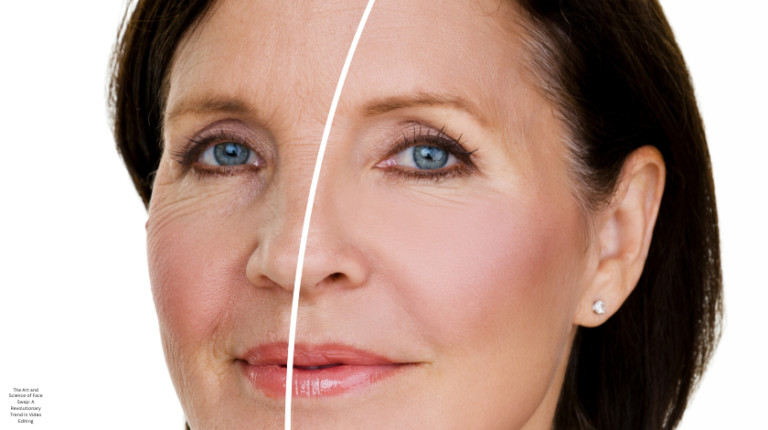Face swap technology has revolutionized the way we interact with digital media. From casual entertainment to professional applications, this cutting-edge tool has opened up new realms of creativity and innovation. In this article, we explore the intricacies of face swap video technology, its applications, and the ethical considerations that come with it The Art and Science of Face Swap: A Revolutionary Trend in Video Editing.
What is Face Swap Technology?
Face swap technology allows the replacement of one person’s face with another in photos or videos. Powered by artificial intelligence (AI) and deep learning algorithms, it seamlessly integrates facial features, expressions, and movements to create a realistic effect. Initially a niche novelty, face swap has rapidly evolved, becoming a mainstream tool in video editing and content creation.
How It Works
The process behind face swapping involves several key steps:
- Face Detection: The software identifies and maps facial features using advanced AI algorithms.
- Feature Extraction: Distinctive features such as eyes, nose, and mouth are extracted and analyzed.
- Face Alignment: The software aligns the replacement face to match the angle, lighting, and proportions of the original.
- Rendering: The final step involves blending the new face into the video, ensuring natural expressions and smooth transitions.
Applications of Face Swap Technology
1. Entertainment and Social Media
Face swap gained popularity through mobile applications like Snapchat and TikTok, which offer users the ability to swap faces with friends, celebrities, or fictional characters. These fun and often humorous edits have fueled viral trends and increased user engagement on social platforms.
2. Film and Television
In the entertainment industry, face swap technology is used to achieve sophisticated visual effects. For instance:
- Actors’ faces can be digitally replaced to perform stunts.
- Historical figures can be convincingly brought to life in documentaries and biopics.
- De-aging or age-enhancing techniques can transform actors’ appearances for narrative purposes.
3. Marketing and Advertising
Brands leverage face swap to create personalized and interactive campaigns. For example, users can upload their faces onto branded characters in advertisements, creating a unique and memorable experience.
4. Gaming and Virtual Reality (VR)
Face swapping has found a home in gaming and VR, where players can customize avatars to include their faces. This enhances immersion and personal connection with the gaming experience.
5. Forensic and Medical Applications
In forensic science, face swap technology assists in reconstructing facial features for identification purposes. In medicine, it is used for reconstructive surgery planning, allowing patients to visualize outcomes before procedures.
The Rise of Deepfake Technology
Face swap is closely related to deepfake technology, which uses AI to superimpose realistic faces onto individuals in videos. While deepfakes have legitimate uses in entertainment and education, their potential for misuse has raised concerns.
Ethical Considerations
The ethical implications of face swap and deepfake technologies are significant. Issues include:
- Privacy Invasion: Unauthorized face swapping can infringe on individuals’ privacy.
- Misinformation: Deepfakes can spread false narratives by making it appear as though individuals said or did things they did not.
- Cybersecurity Risks: Malicious actors may use face swap technology for identity theft or fraud.
To mitigate these risks, developers and governments are working on implementing safeguards, such as watermarks, detection tools, and stricter regulations.
How to Create Face Swap Videos
Creating face swap videos has become increasingly accessible thanks to user-friendly tools and applications. Here’s a step-by-step guide:
1. Choose the Right Software
Select a face swap tool that meets your requirements. Popular options include:
- Adobe After Effects for professional-grade edits.
- Reface for quick and entertaining swaps on mobile.
- DeepFaceLab for advanced deepfake creation.
2. Prepare the Media
Gather high-quality images or videos of the original face and the replacement face. Ensure consistent lighting and angles for best results.
3. Upload and Edit
Import the media into your chosen software. Follow the on-screen instructions to detect faces, align features, and render the final video.
4. Review and Export
Check the output for realism and accuracy. Make any necessary adjustments before exporting the final video in your preferred format.
The Future of Face Swap Technology
As AI and machine learning continue to advance, face swap technology will likely become even more sophisticated. Future developments may include:The Art and Science of Face Swap: A Revolutionary Trend in Video Editing.
- Real-Time Face Swapping: Enhanced algorithms could allow live face swaps during video calls or live broadcasts.
- Hyper-Realistic Effects: Improved rendering techniques could make face swaps indistinguishable from reality.
- Broader Accessibility: Cloud-based tools may democratize access to high-end editing capabilities.
Conclusion
Face swap technology represents a fascinating blend of art and science. Its versatility spans entertainment, marketing, and even medicine, showcasing its transformative potential. However, the power of this technology comes with responsibilities. By fostering ethical usage and developing robust safeguards, society can harness face swap technology to inspire creativity while mitigating risks. Whether you’re a hobbyist or a professional, the possibilities are endless—and the journey has just begun.
